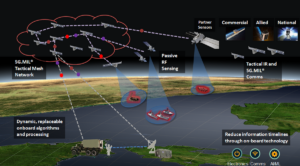
Lockheed Martin [LMT] said that it plans to launch three company developed satellites next year to help demonstrate Joint All-Domain Operations (JADO). The effort is part of the company's Space-Augmented JADO Environment (SAJE) test bed. "In 2023, Lockheed Martin will launch its own constellation of small satellites to demonstrate how space can provide global battlefield awareness, sensing and connectivity in even the most austere, denied or contested areas," per Lockheed Martin. The three are two Pony Express 2 satellites and…














